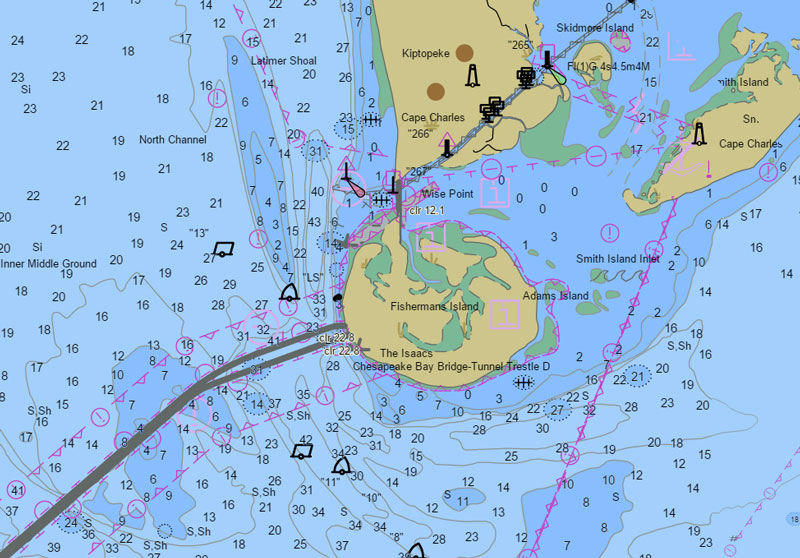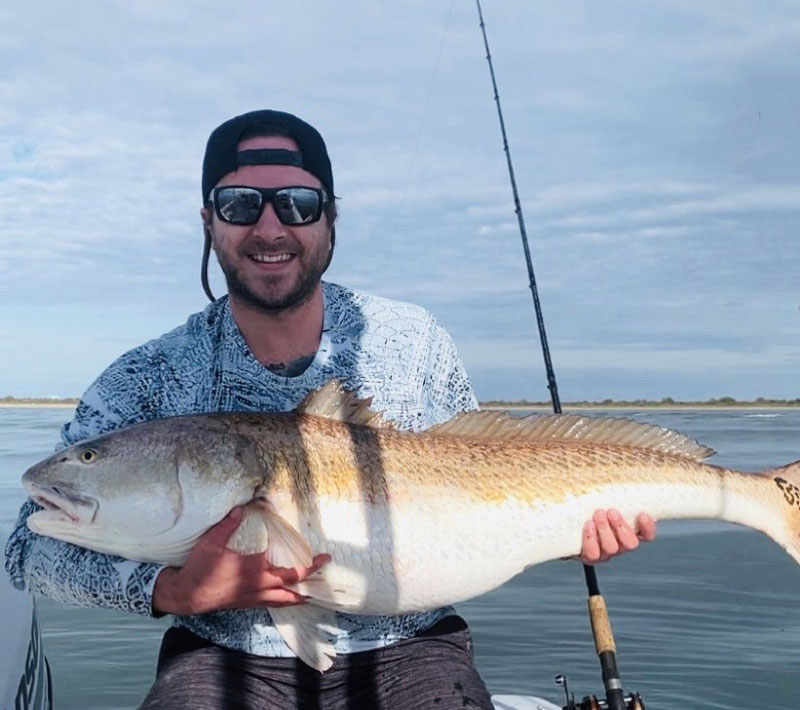At some point this month the first big bull red drum of the season will show up. Expect them to make their initial appearance at the shoals at the mouth of the Bay and along the lower Eastern Shore in relatively limited numbers, as the early forerunners won’t be in the massive schools that appear later in the season. But after the long wait for spring, getting just one of these bruisers on the line is well worth the effort—who can wait another day!? But, how will you target them?

Baiting Early Bull Redfish
Baiting up is the most common method.
- Rig up 40-pound class or heavier rods and reels with fishfinder-style rigs weighted down by four- to six-ounce pyramid sinkers. Add 50-pound fluorocarbon leaders terminating with 8/0 to 10/0 circle hooks.
- Get peeler or “buckram” crab (buckrams are recently shed crab that have hardened up just enough to be too tough to be sold as soft), and get plenty. These big fish want a big meal, and a half a crab makes for a single bait. If you can’t get crab, fresh cut bunker, mullet, or spot are the backup baits.
- Anchor up just off the edge of a shoal. These early fish will be cruising along the depth changes, so you’ll want your baits to be sitting right on the edges.
- Go early and stay late. The early bulls can be caught at any time of day, but the best fishing is commonly in low light especially at dusk. On calm evenings, night fishing can be the move.

Bull Reds on Artificials: Abandoning the Bait
You say you hate fishing bait, or maybe you just can’t locate a good supply? All is not lost if you still want to target those early bulls. While big schools and sight fishing may not be in the cards for a few more weeks, trolling wobbling spoons is another way to get early birds on the line.
- Rig up heavy trolling gear with four- to eight-ounce inline weights, followed by a 10- to 15-foot leader in the 60- to 80-pound range. At the end tie on a large wobbling spoon of around five to seven inches, like a Tony Acetta, Huntington Drone, or Crippled Alwive. Silver, gold, and green prism are all good finishes and having feathers at the hook doesn’t hurt.
- Set a speed just about as slow as you (and your boat) can stand it. Two to three mph is the sweet spot.
- Shadow the contours of the shoals, keeping your offerings as close to the edges as possible.
However you choose to tackle the big bruisers of spring, remember that this is an all catch-and-release fishery, so these reds need to be treated with kid gloves. Snapping off a photo with the fish still in the water is ideal. If you’re going to land the fish be sure to use a net with knotless, rubberized mesh. Support the fish both at the head (but keep your hands and fingers away from its gills) and about two-thirds of the way down its body, and wet your hands before handling them so you don’t rub off their protective coat of slime.
For more intel on catching reds see: